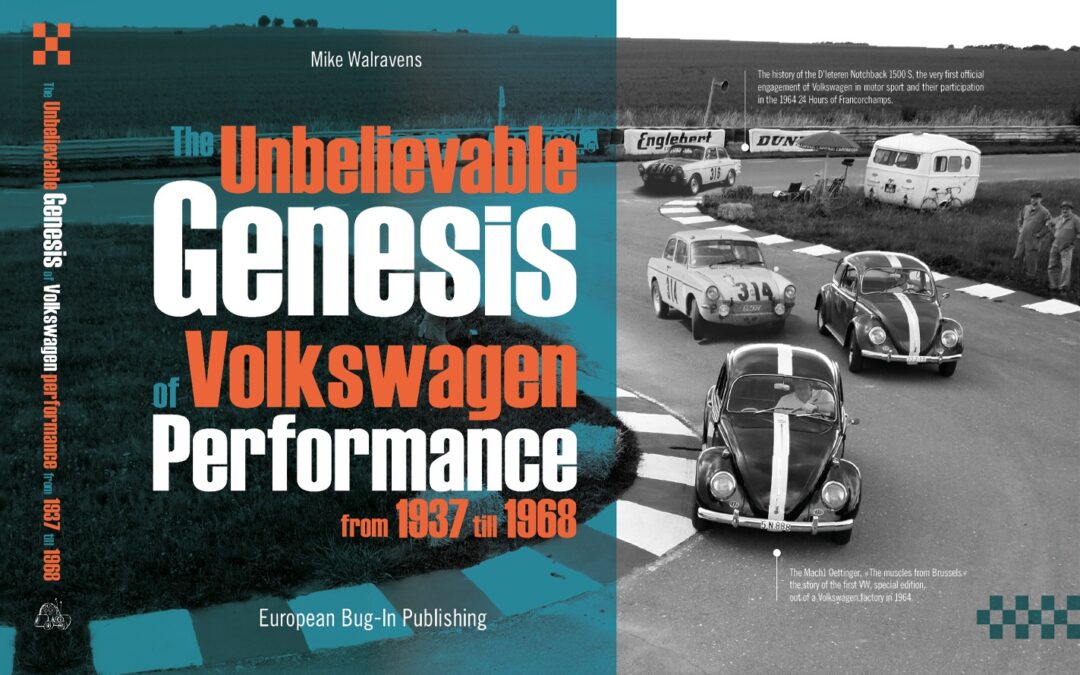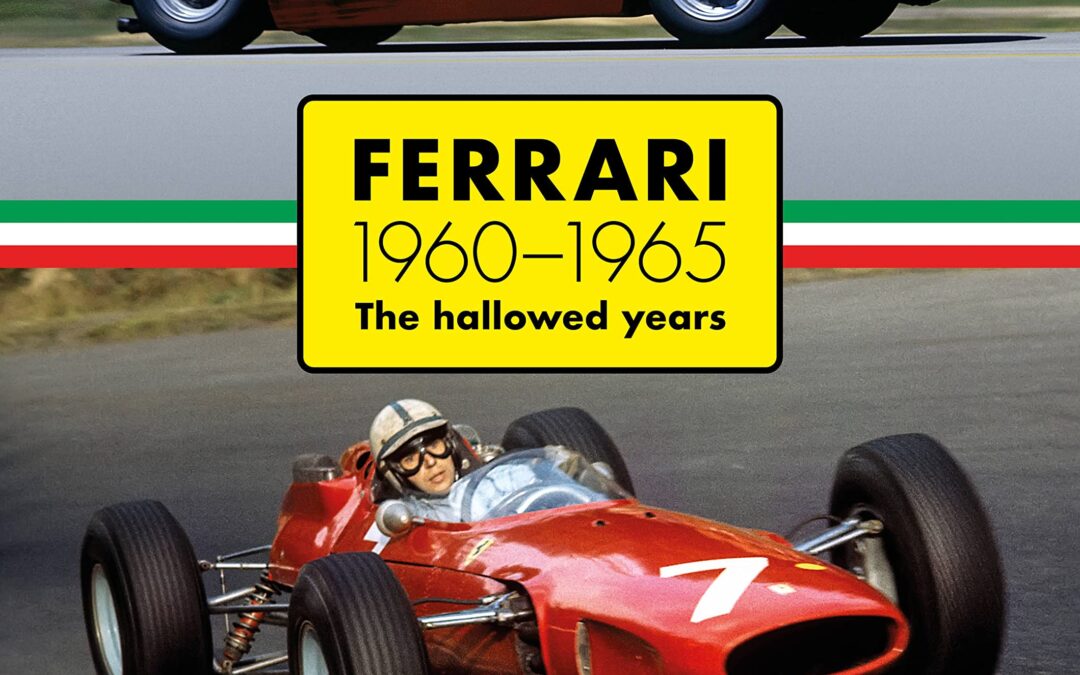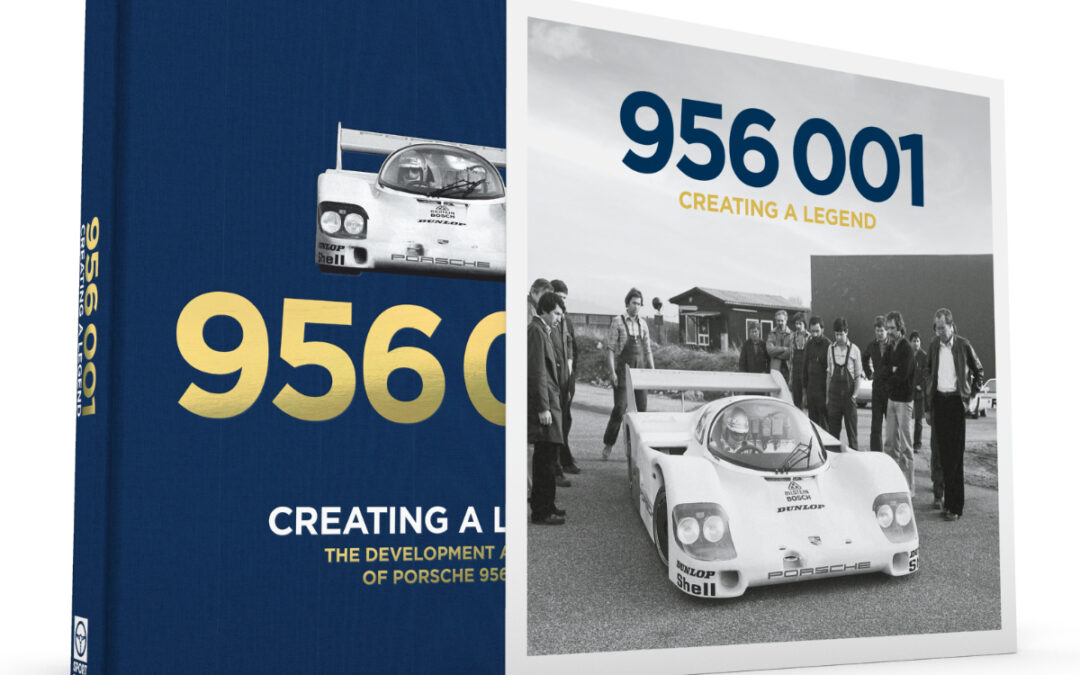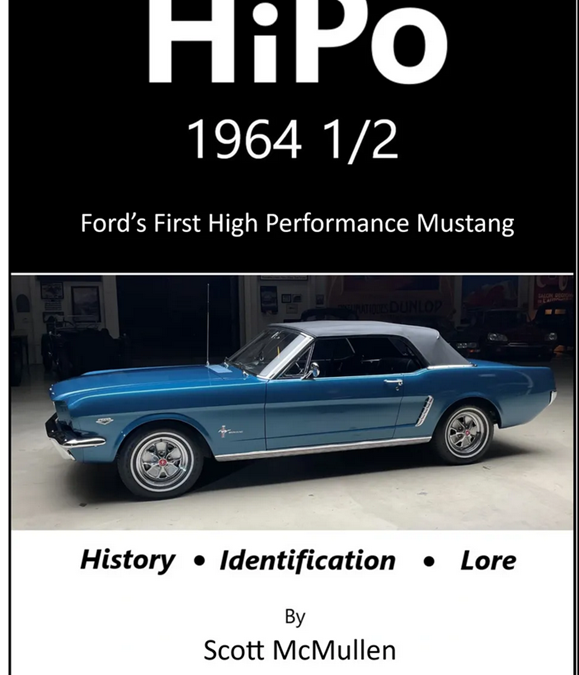
Introducing “HiPo 1964 1/2 Ford’s First High Performance Mustang – History, Identification, Lore”. Dive into the thrilling world of Ford’s iconic 64 1/2 K code Mustang with captivating stories and stunning visuals. A must-have for every auto enthusiast!
The authoritative guide to Ford’s original street legal race-bred Mustang and one of the world’s rarest collector cars, whose fascinating story is sure to entertain a wide range of automotive enthusiasts – not just Mustang fans – covering history, early prototypes, development/testing, production, characteristics/parts, restoration/preservation, and much more. (Hardcover, 347 pages, 157 photos/images both color and black & white.) By Scott McMullen with foreword by Jay Leno.
“HiPo 1964 ½ Ford’s First High Performance Mustang” focuses on one of Ford’s rarest production cars – rarer than the 1965-1966 Shelby GT 350 and the only option for Mustang performance buffs prior to August 1964. Also known as HiPos or K codes, most enthusiasts are aware of the 65-66 models, but little about the 64 ½ HiPo Mustangs, has been available. The 64 ½ cars were the original embodiment of the street legal race-bred Mustang. Their fascinating story is sure to entertain a wide range of automotive enthusiasts – not just Mustang fans.
The book includes rare, and in some cases, never-before-published pictures of early High Performance Mustang prototypes and pre K code mustangs production cars. Included are details of experimentation and production along with in-depth discussions of how research and development progressed through the start of 64 ½ K code production up to the start of 65 production. Also explored is the lore of these classic muscle cars and the test drivers, like Dan Gurney, who helped wring them out.
This information is invaluable to the collector and automotive performance enthusiast alike. Even the most knowledgeable Mustang aficionado will find new information, some of which will challenge old notions and lore that has been told through generations of Mustang fans the world over. The book goes on to present tips for preserving and restoring a 64 ½ HiPo Mustang. It further delves into characteristics of an authentic 64 ½ K code Mustang along with how they changed through the few weeks in 1964 that these ultra rare cars were produced.
Hardcover, 347 pages, 157 photos/images both color and black&white.

Contrary to popular belief, ‘Fluxie’ did not enter the world on full opposite-lock, nor did he have a cigarette in one hand and a pint in the other. Destined to race, he never got the biggest breaks but he did become one of motorsport’s most colourful and best-loved characters, someone who has always lived life to the full.
Ian Flux’s autobiography tells it how it was, covering not only the highs — including five championship titles — but also the many setbacks. Along the way we laugh with him about much of it, particularly the pranks, but also learn about some dark times that he has never previously divulged.
- Early days: growing up on a farm, first kart aged 6, muddling through in the classroom, lots of laughs — but also sexual abuse from a schoolmaster and an early racing mentor.
- The spark ignites: starting to race in 1970 with a Formula 6 kart, then onwards to Formula Vee; brushing shoulders with Formula 1 working for the Token and Graham Hill teams.
- Grabbing the chances: a Formula Vee title in 1975 leads to Formula 3 and Formula Atlantic, but still with various jobs to make ends meet, including as mechanic to motorcycle racing legend Giacomo Agostini for his four-wheel efforts.
- Diversifying into sports cars: successful adventures in Sports 2000 and Thundersports, winning championships in both, plus Thundersaloons.
- A true all-rounder: going into the British Touring Car Championship from 1988 in a wide range of tin-tops; racing a Jaguar XJR-15 in the big-money 1991 series held at Grand Prix races, including Monaco.
- Championship double in 1996: the ‘golden year’ in the TVR Tuscan Challenge and the British GT Championship, the latter with a McLaren F1 GTR.
- So much else: racing on into recent times, notching up nearly 50 years on track; testing competition cars for Motorsport News; driver tuition and track-day demonstrations.
This is a very different kind of racing driver’s memoir, with lots of laughs along the way together with searing personal honesty.

Explore the thrilling illustrated story of NASCAR stock car racing in America with this stunning celebration filled with evocative photography, legendary drivers, and a decade-by-decade history.
NASCAR 75 Years captures the greatest moments throughout the decades: from the beaches of Daytona to the jaw-clenching competition, the mind-bending technology, the triumphs, the teamwork, and the high-speed thrills. Large-format photography from throughout NASCAR history brings it all to life alongside narratives written by a roster of veteran NASCAR reporters and historians.
Follow NASCAR’s growth from a small, innovative family business to a leader in sports entertainment, witnessed each week by millions in person and on national television. The authors show the evolution of the vehicles—from modified family sedans to 700-horsepower race-built behemoths, all the way through the “Next Gen” cars that debuted in 2022—and celebrate the drivers who have piloted them around tracks like Daytona, Talladega, Darlington, Las Vegas, and more —legendary heroes with names including Flock, Weatherly, Petty, Allison, Yarborough, Earnhardt, Waltrip, Gordon, Stewart, Johnson, Busch, all battling wheel to wheel, week after week, across the United States.
This beautifully designed and extensively illustrated book provides the ultimate history of the legendary series, celebrating the drivers, crew chiefs, pit crews, owners, and tracks, from the earliest days on Florida’s beaches right through to today’s superspeedways, short tracks, and road courses. Compiled by authors with a passion for motorsport, NASCAR 75 Years is a volume no fan can be without.
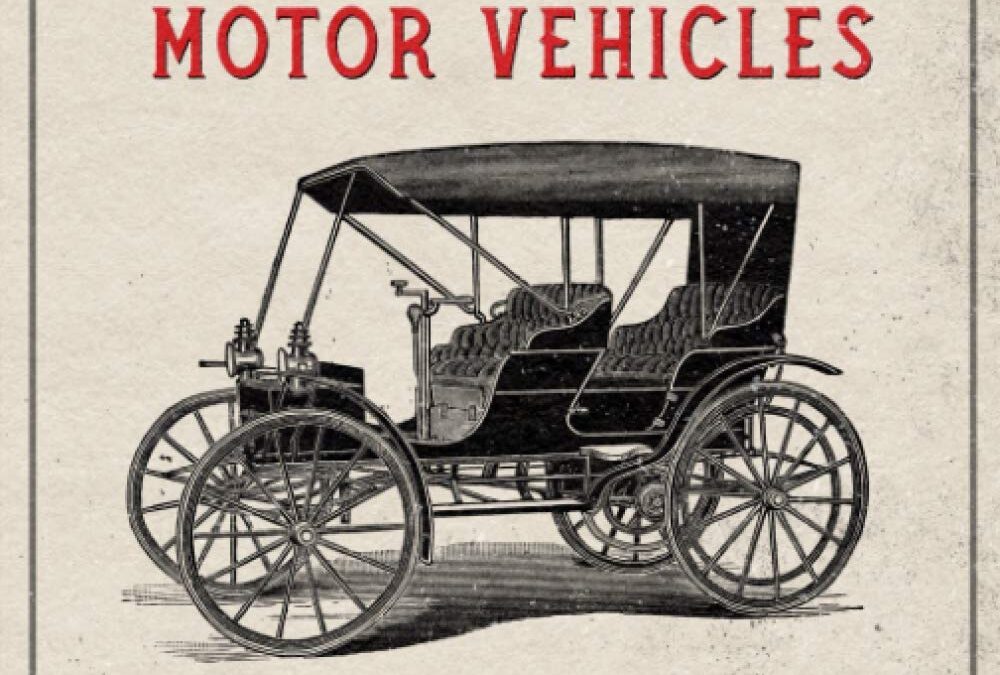
More than 500 detailed illustrations enhance this contemporary guide to the inner workings and mechanics of turn-of-the-century automobiles, trucks, and motorcycles.
Released in 1911 as “Self-Propelled Vehicles: A Practical Treatise,” James Homans’ spectacular, all-encompassing book about the fascinating world of gas-powered, electric-powered, and steam-powered motor vehicles leaves no stone unturned in its celebration of the classic automobile.
Classic car collectors, racers, and enthusiasts will enjoy this thorough look under the hood as Homans dissects every part of the “horseless carriage” from a unique and contemporary viewpoint that offers a keen insight into the bygone age of dramatic motoring. Antique Cars and Motor Vehicles spans more than 640 pages, immersing readers in a world of automotive history, vehicle parts, driving gears, steering, suspension, engines, exhaust, and even old fashioned American road signs.
The hundreds of Images of cars, engines, parts, and mechanic operations are crisp and detailed, created by skilled master artists with a sharp eye for detail. It’s everything that you ever wanted to know about classic motoring in a single, entertaining, and well-illustrated volume!
This enhanced 2020 re-release features enlarged 7” x 10” pages that retain the original classic type font and page layouts, crisp, digitally re-scanned images, and a new retro cover design created to enhance your reading room and garage.
Table of Contents:
Chapter 1 – History of Self-Powered Vehicles
Chapter 2 – The Make-Up of a Motor Carriage
Chapter 3 – Compensation and Compensating Devices
Chapter 4 – The Driving Car
Chapter 5 – The Steering of a Motor Vehicle
Chapter 6 – Combined Steering and Driving
Chapter 7 – The Supports of a Motor Vehicle
Chapter 8 – Motor Carriage Wheels
Chapter 9 – Tires
Chapter 10 – The Construction of Tires
Chapter 11 – Pneumatic Tire Troubles
Chapter 12 – Care of Pneumatic Tires
Chapter 13 – Types and Merits of Automobiles
Chapter 14 – The Theory of Heat Engines
Chapter 15 – The Parts of a Gas Engine
Chapter 16 – The Four-Cycle Gas Engine
Chapter 17 – The Two-Cycle Gas Engine
Chapter 18 – Compression and Expansion
Chapter 19 – Efficiency in a Gas Engine
Chapter 20 – Exhaust
Chapter 21 – Water Cooling for the Cylinder
Chapter 22 – Air Cooling for the Cylinder
Chapter 23 – Power Elements of a Gas Engine
Chapter 24 – Carburetors
Chapter 25 – Ignition
Chapter 26 – Balancing Gasoline Engines
Chapter 27 – Governing and Control of a Gasoline Engine
Chapter 28 – Clutches
Chapter 29 – Transmissions
Chapter 30 – Brakes
Chapter 31 – Roller Bearings
Chapter 32 – Lubricants
Chapter 33 – Practical Operation of Gasoline Engines
Chapter 34 – Motorcycles
Chapter 35 – Steam Engines for Automobiles
Chapter 36 – Boilers and Flash Generators

April 1946: the first 15 examples of the Vespa leave the Piaggio factory. This was the beginning of a unique and unrepeatable story, that of a revolutionary two-wheeled vehicle that as well as leaving an indelible trace in the history of transportation, has become an authentic cult object for every generation that followed.
Simple elegant forms, practicality and riding comfort were just a few of the qualities that brought the popular scooter success on a global level.
75 years on from the first Vespa, this book, an updated version of the successful Vespa 70 Years, traces decade by decade the technical and stylistic evolution of this timeless icon. All this without losing sight of aspects associated with communications – ever a strong suit of the Pontedera group – and the ever-increasing interest of collectors.
The title Vespa. The complete history is complemented by the book Vespa. All the models, published in 2020, which offers in a single volume a systematic catalogue of every model and every version produced by Piaggio.
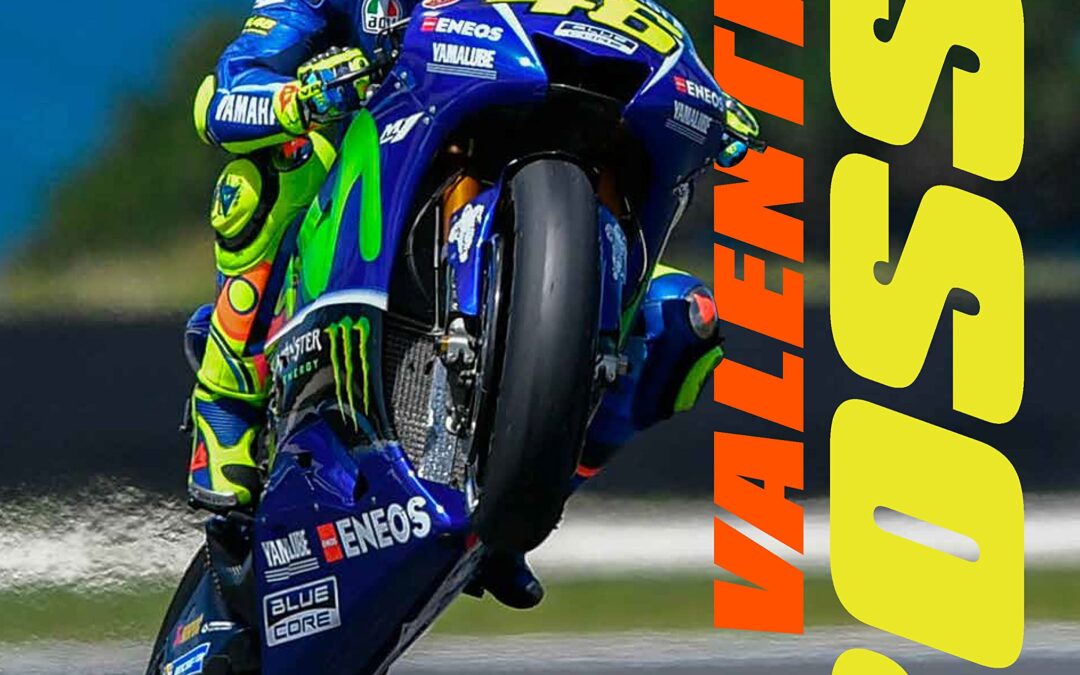
From the day he was born into a racing family on February 16, 1979, Valentino Rossi seemed destined for racing greatness. Racing karts and minimotos as a child, he progressed to international motorcycle competition in 1996, riding for Aprilia in the 125cc class; Rossi won his first World Championship the following year. Advancing to MotoGP’s premier class in 2000, Rossi would go on to win nine Grand Prix World Championships and score 89 victories in 371 starts.
In this richly illustrated review of the most successful MotoGP career of the twenty-first century, relive Rossi’s incredible battles against the likes of Max Biaggi, Sete Gibernau, Dani Pedrosa, and more and how they inspired three films (Faster, Fastest, and Hitting the Apex). Long-time motojournalist and author Michael Scott was at the circuit for nearly all of Rossi’s 432 grand prix races and every one of his 115 grand prix wins.
Rossi’s incredible charm, wit, and irreverence earned him a huge fan base and his indomitable will to win cemented his racing legend. Valentino Rossi: Life of a Legend recounts it all.

Max Verstappen is Formula 1’s sensational new superstar. Born into motorsport, Max started karting aged four and in 2015 became the youngest driver ever to race in F1, less than six months after his 17th birthday. Following his first Grand Prix victory in 2016, he quickly established himself as a future World Champion and by 2021 his goal was in sight. Like a true Dutch Master, he has brought fresh artistry into F1 and made this most glamorous of sports even more exciting.
This unauthorised biography, written by a leading Dutch F1 journalist, examines Max’s remarkable rise to worldwide fame, covering every step of his career in detail as well providing insights into his spirited character and supreme talent.
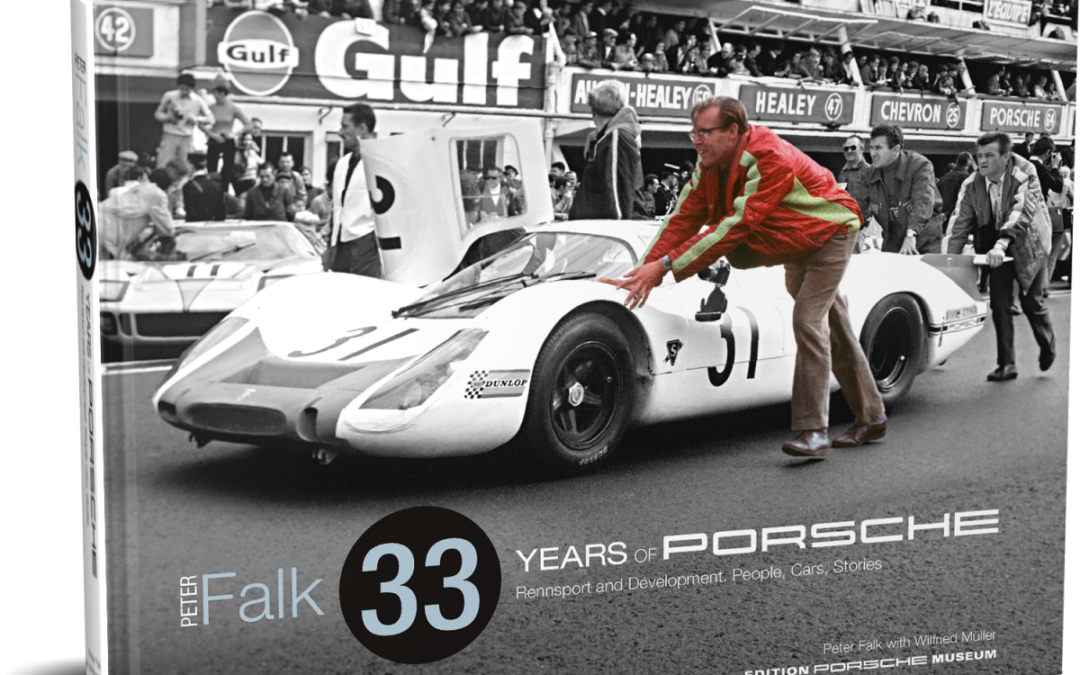
This edition of the book is limited to only 150 numbered copies, contains a hand signature of Peter Falk and comes in a luxury linen slip case.
Peter Falk and Porsche, 33 years of passion and devotion: As their race director and one of the leading figures in their experimental department, Peter Falk contributed significantly to the character of the sports cars from Stuttgart-Zuffenhausen – both on the race track and on the road.
From the first 901 right through to the very last air-cooled Type 993, every Porsche 911 bears the signature of Peter Falk. He joined the company in 1959 and quickly rose through the ranks to head various testing departments. In the mid-sixties, Falk also took over the tactical and technical leadership of the factory’s “Rennsport” team. In 1981, he was appointed as race director and led Porsche throughout its most successful era of competition. “His” team won at Le Mans, became World Sports Car Champions, conquered the Paris-Dakar Rally, and was victorious in Formula 1 with the TAG Turbo engine.
In this book, Peter Falk tells of his years with Porsche. A highly respected person in the world of engineering, he relates how it all began at Porsche – when race drivers and engineers huddled together in a shepherd’s hut at Weissach to discuss suspensions, what the Porsche crew experienced during endless testing adventures in both the Arctic Circle and the Sahara, how the race cars at Le Mans roared to the start over country roads, and how a test drive with a Porsche 908 almost cost him his life. He shares his views on every Porsche race car, from the 904 Carrera GTS to the 962C, and describes the race drivers who competed during his reign: Hans Herrmann, Jacky Ickx, Vic Elford, Derek Bell, Hans-Joachim Stuck and Jochen Mass to name just a few. Falk provides a good, long look into the inner workings of Porsche.
Peter Falk shared his personal Porsche stories and fascinating insights with the author Wilfried Müller. The images in this book come from Peter Falk’s private collection, from the Porsche Historical Archive in Stuttgart-Zuffenhausen, and from the vast cache at McKlein Photography. Along with the contributions from former colleagues and race drivers, these images and stories give an in-depth portrayal of Peter Falk’s 33 years with Porsche.

This story is like something out of Hollywood.
In the mid-1960s BSA/Triumph learns that Honda is to launch a 750cc motorcycle that will clearly outclass its 650cc twins. Luckily, Meriden’s top two designers – Bert Hopwood and Doug Hele – have been toying with the idea of a 3-cylinder 750. Could it work? The prototype is fast and intoxicating to ride, but delays mean the Triumph Trident and BSA Rocket 3 have only been on the market a few weeks when the smoother Honda 750 comes along.
The British bikes might be fast, but they lack sophistication and no one loves their oddball styling. Sales are so slow that production is suspended for eight months. BSA/Triumph fights back with a factory race team that sweeps all before it in 1971, including a 1–2–3 at the Daytona 200. And while BSA collapses, Triumph struggles on, launching the factory custom Hurricane and updating the T150 Trident with a 5-speed gearbox and front disc brake.
The Meriden factory sit-in stops Trident production, but a few months later bikes are rolling off the line at Small Heath and the electric-start T160 is launched. To no avail – the odds are against them and in early 1975 Trident production finally stops.
But just as in Hollywood, that’s not the end of the story. Les Williams and Norman Hyde keep the Trident flag flying through the 1980s and beyond. The Trident and Rocket 3 Owners’ Club is formed, bringing together enthusiasts for the iconic triples. And in 1992 (and again in 2020) the reborn Triumph company launches 3-cylinder bikes that carry on the Trident name.
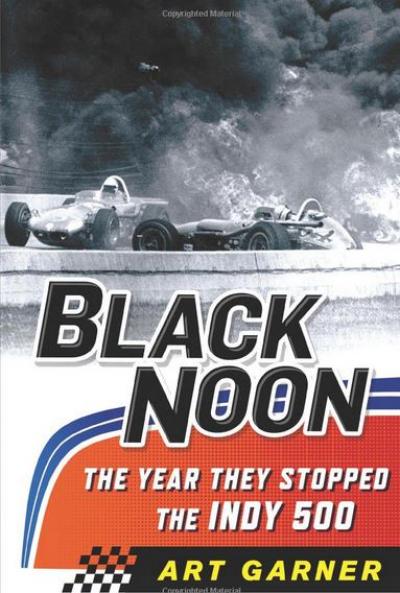
Winner of the 2014 Dean Batchelor Award, Motor Press Guild “Book of the Year”
Short-listed for 2015 PEN / ESPN Literary Award for Sports Writing
Before noon on May 30th, 1964, the Indy 500 was stopped for the first time in history by an accident. Seven cars had crashed in a fiery wreck, killing two drivers, and threatening the very future of the 500.
Black Noon chronicles one of the darkest and most important days in auto-racing history. As rookie Dave MacDonald came out of the fourth turn and onto the front stretch at the end of the second lap, he found his rear-engine car lifted by the turbulence kicked up from two cars he was attempting to pass. With limited steering input, MacDonald lost control of his car and careened off the inside wall of the track, exploding into a huge fireball and sliding back into oncoming traffic.
Closing fast was affable fan favorite Eddie Sachs. “The Clown Prince of Racing” hit MacDonald’s sliding car broadside, setting off a second explosion that killed Sachs instantly. MacDonald, pulled from the wreckage, died two hours later.
After the track was cleared and the race restarted, it was legend A. J. Foyt who raced to a decisive, if hollow, victory. Torn between elation and horror, Foyt, along with others, championed stricter safety regulations, including mandatory pit stops, limiting the amount a fuel a car could carry, and minimum-weight standards.
In this tight, fast-paced narrative, Art Garner brings to life the bygone era when drivers lived hard, raced hard, and at times died hard. Drawing from interviews, Garner expertly reconstructs the fateful events and decisions leading up to the sport’s blackest day, and the incriminating aftermath that forever altered the sport.
Black Noon remembers the race that changed everything and the men that paved the way for the Golden Age of Indy car racing.
Soft Cover
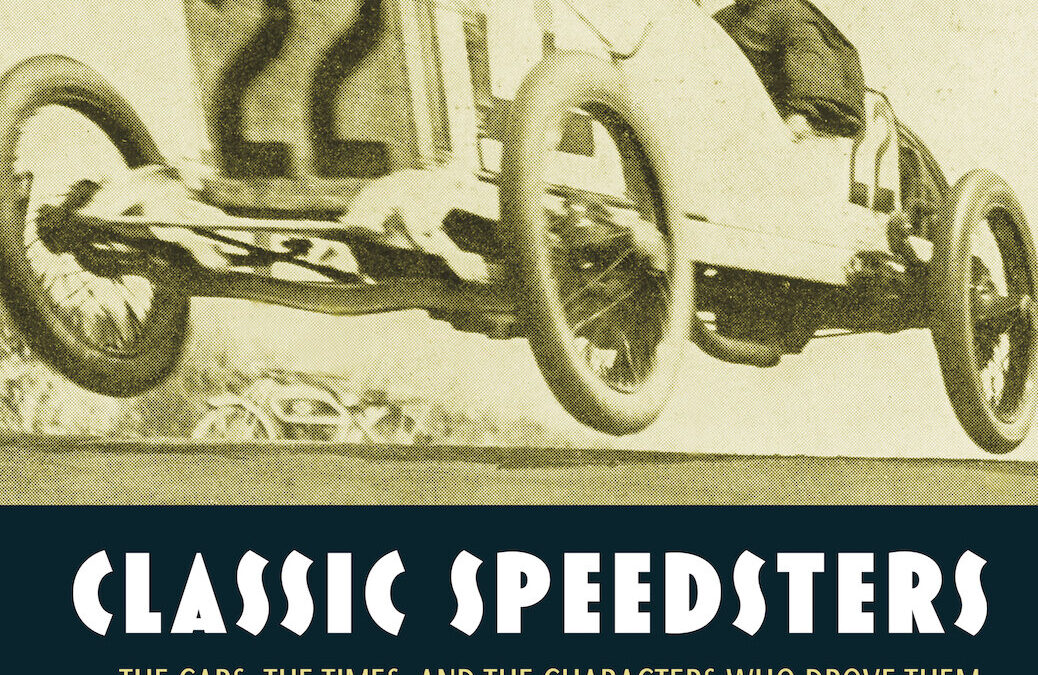
12 Chapters, 12 Car Companies, 12 Famous Owners And a collection of speedsters that will inform and entertain!
Have you ever wondered when and how the hotrod movement started? Or speed and endurance events? Landspeed racing? Hillclimbing? Or anything involving power, speed, or just having some fun in an automobile? This book—Classic Speedsters—covers all of that, and much more.
Classic Speedsters: The Cars, The Times, and The Characters Who Drove Them chronicles the most significant vehicles ever to have traveled American roads and racetracks. Speedsters were the pizzazz cars of their era. Speedsters were owned by entertainers, captains of industry, the wealthy, and in some cases, the everyday guy or gal. They were often expensive, but they were always fast and sexy. Speedsters were America’s first sports cars.
Each chapter frames the birth and evolution of a company that produced a speedster model in its lineup and includes a biography of a famous owner of the period. This book traces the journey of the speedster concept across several time periods, from 1894 to 1970. It examines the speedster’s story among 12 automotive companies, 11 of which were American.
This is the first automotive book to study the speedster concept in depth. A broad swath of speedsters from 12 different manufacturers (actually—there are 13 companies in the book) are examined in order to distill the essence of this singular model.
The companies and the speedsters that they produced are framed within the context of their time to better understand how technology and market forces shaped the success and failure of these companies (and their cars). The people who were drawn to and purchased these vehicles—why did they? This too is examined and discussed.
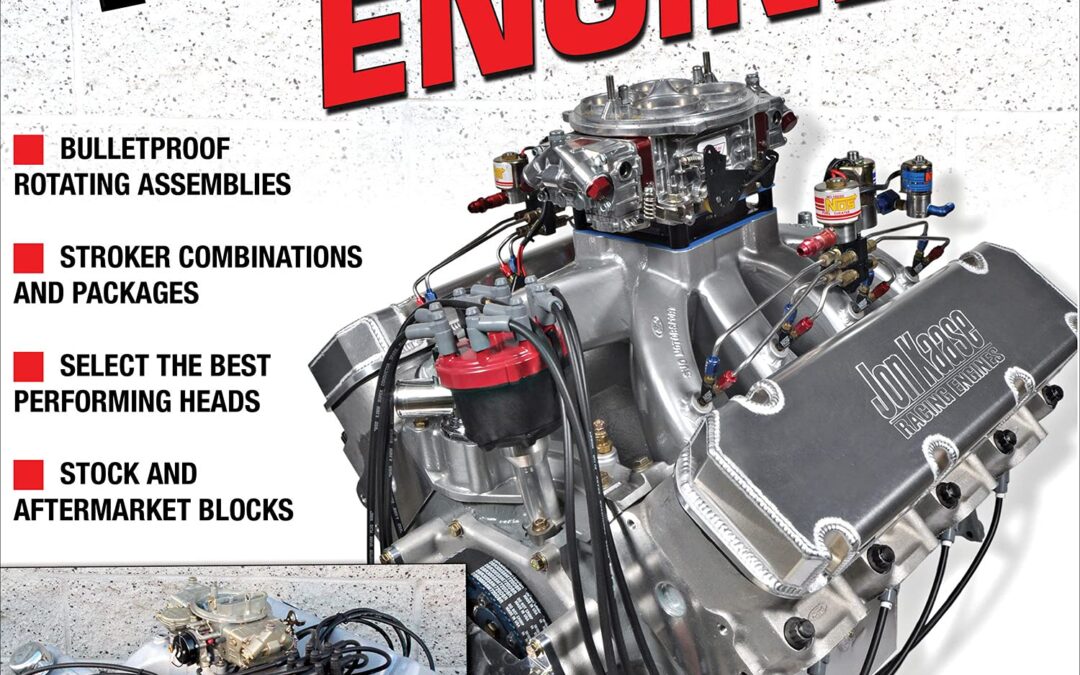
Learn to make incredible horsepower from Ford’s most powerful big-block engine design.
For years, Ford relied on the venerable FE big-block engine design to power its passenger cars, trucks, and even muscle cars—and why not? The design was rugged, reliable, amortized, and a proven race winner at Le Mans and drag strips across the country. However, as is always the case with technology, time marches on, and Ford had a new design with many improvements in mind. Enter the 385 family of engines (also known as the “Lima” big-block). Produced from 1968–1998, the 385-series engines were used in multiple applications from industrial trucks to muscle cars and luxury cruisers.
In Ford 429/460 Engines: How to Build Max Performance, which was written by Ford expert Jim Smart, all aspects of performance building are covered, including engine history and design, induction systems, cylinder heads, the valvetrain, camshaft selection, the engine block, and rotating assemblies. The best options, optimal parts matching, aftermarket versus factory parts, budget levels, and build levels are also examined. The 429/460 engines are a good platform for stroking, so that is covered here as well.
Whether you want to build a torque-monster engine for your off-road F-150, a better-preforming version of a 1970s-era smog motor for your luxury Lincoln, or an all-out high-horsepower mill for your muscle car, this book is a welcome addition to your performance library.

FULL CIRCLE: A Hands-on Affair with the First Ferrari 250 GTO may be the first car memoir – a car revered for its international racing performance and artistic mystique – the first Ferrari 250 GTO, born in Italy in 1962.
It is also the memoir of a man, himself unique – Larry Perkins, a rocket scientist /car racer /artist. His stories chronicle how The Car (a.k.a. “Sophia” named for the elegant Italian bombshell Sophia Loren) pops in and out of his life. These events, and the people associated with them, create a series of full circles in their shared journey.
Full Circle: the past becomes future becomes past, illuminating words to the famous song… “When Everything Old is New Again”.
While Larry was working on the Apollo program to land a man on the moon, and later the Viking Mars Lander program and other space missions, Sophia and Larry had an on-again off-again relationship – an “affair” so to speak – for over 50 years. They found each other in 1963 and formed a surprising dynamic of man-machine synergy. Life was fast and furious, fun and full of trophies. When it seemed destined to be over, Larry sold the Ferrari in 1966 for a mere $3600. The racing duo lost track but were re-united and then parted again. Finally … unbelievably … Sophia found Larry when they were both a little older. With the spark alive, their racing history was re-born in a most spectacular way. Each was transformed by the other.
The memoir starts with a man searching for the perfect race car and develops into a previously unrecorded history of s/n #3223 GT with racing tales. Larry and his wife, Petra, tell of an irresistible GTO attraction and adventures during the exciting era of ’60s sports car racing. (Petra first saw the Ferrari at a memorable race with a fiery crash at Sebring, Florida, when she was 15, but did not meet its driver for 15 more years.)
The authors show the exhilaration of key races and an anecdotal chronology of #3223 with photos, some never seen. They examine what a race driver is really like, the attributes of a highly competitive personality, and the unrelenting dedication to Winning. After all, it was not easy for a small privateer – someone who had started racing relatively late in life (with a consuming day job) – to compete with the likes of racing champions Phil Hill, Pedro Rodriquez, Mario Andretti, and Dan Gurney.
The book emphasizes the value of teamwork. “Doing the impossible” – in racing or rocketry – demands the best of humans working together to render perfect machines. This is an intimate account about the people who made The Car what it ultimately became.
How did this car acquire its timeless aura of mystique?
How cool is it to drive such a powerful and exquisite piece of machinery?
To what degree can a car be considered fine art?
What happened to Larry and why did it turn out to be so spectacular, almost eclipsing his early successes in racing the GTO? When and Where did all this happen?
And best of all, Who are the passionate people that made it happen?
Full Circle: A Hands-On Affair with the First Ferrari 250 GTO answers these questions and provides readers with a thrilling personal play-by-play of racing the very first Ferrari GTO for the very first time.
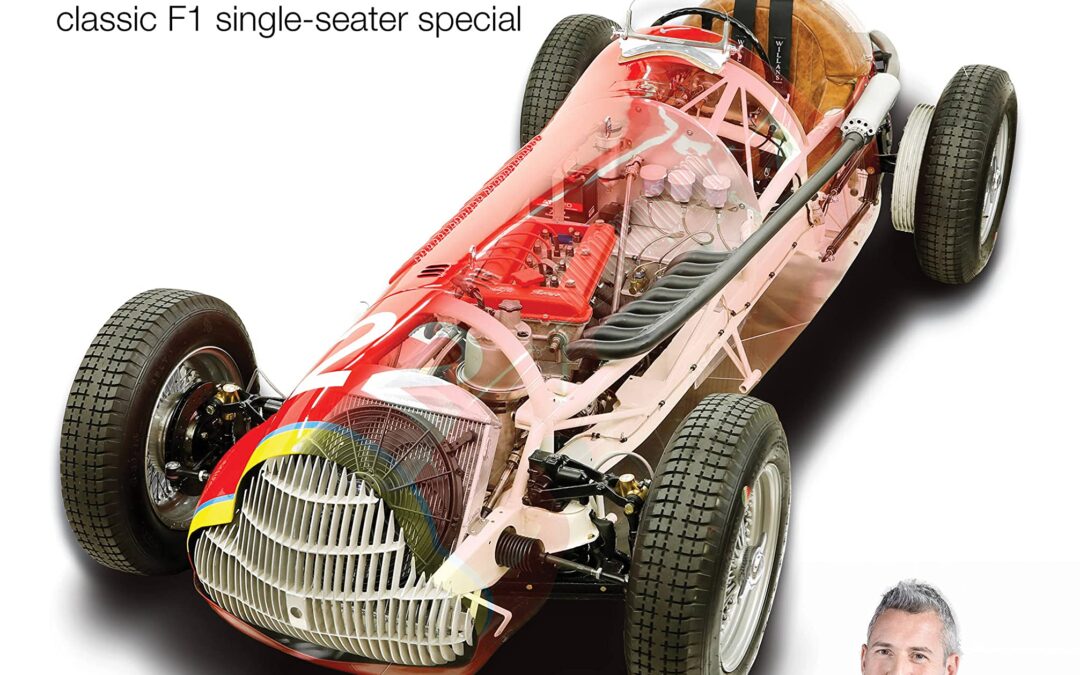
Ant Anstead’s Building a Special brings the Haynes story full circle, coming 61 years after the original Building a 750 Special was written by John Haynes, Haynes Publishing’s founder, when he was still a schoolboy.
This book is a TV tie-in, following the 12-part TV series Ant Anstead Master Mechanic, aired on Motor Trend, part of the Discover Network in the US and UK, following Ant Anstead’s build of his own-design ‘special’ car, taking inspiration from the Alfa 158 – the first World Championship-winning F1 car, which raced from the 1930s until the 1950s. The 12-part TV series followed Ant’s build of the car, from the first design ideas, through the construction, culminating in the debut of the car during the 2019 US Grand Prix weekend in Austin, Texas.
The book follows Ant’s personal build of the car, from the selection of the donor MG TD for the chassis, and Alfa Romeo Spider for the engine and gearbox, through modifying the chassis, building the suspension, steering, brakes, bodywork and interior, and putting all the components together to produce a finished one-off ‘special.’
Content includes:
- Introduction
- The history of specials
- Planning
- Donor car
- Chassis, suspension, steering, rear axle
- Engine, fuel system, cooling system, ancillaries, exhaust
- Gearbox
- Bodywork
- Braking system
- Cockpit
- Wiring
- Preparation and painting
- Testing
- Setting up and making road legal.

Packed with photography, narrative, and race results, Porsche at Le Mans is the definitive illustrated history of Porsche’s 70 years of competition in the world’s greatest motor race.
Porsche’s first visit to Le Mans came in 1951 with a streamlined 356 model, complete with aerodynamic wheel fairings. In a precursor to the reputation Porsche would establish over the next seven decades at the famous endurance race, the 356 ran like clockwork, beating the coveted record for the shortest time spent in the pits. Since that memorable debut, Porsche has won outright at Le Mans 19 times, more than any other marque, with a record series of seven consecutive victories from 1981 to 1987. This beautifully designed and extensively illustrated book is your definitive history of Porsche’s participation at La Sarthe, chronicling the exploits of both the works team cars and privateer entries.
Since 1951, Porsche has been represented at every single running of the 24 Hours. The models that have taken part comprise a roll call of great sports racing cars: 550 Spyder, 718 RSK, 904, 906, 907, 908, 910, 917, 936, 935, 956, 962, and GT1—right up to the hybrid 919 that won from 2015 through 2017. To this daunting list can be added the ubiquitous 911, the privateer’s choice for the race (in 1971, a year that saw a record number of Porsches take part, 19 of the 33 Porsches in the race were 911s). And hundreds of them are depicted in historical photos.
In addition to the legendary cars, you will bear witness to the exploits of Porsche drivers, a veritable murderer’s row of motorsport greats, including Derek Bell, Herbert Muller, Helio Castroneves, Mario Andretti, Jacky Ickx, Jo Siffert, Jochen Rindt, Mark Donohue, and Vic Elford, to name just a few.
Meticulously compiled by noted Porsche historian Glen Smale, Porsche at Le Mans is the most exhaustive celebration of the subject, created with full access to the Porsche archives in Stuttgart. The resulting tome is a treasure trove of history, photographs, data, and technical information, indispensable to any serious Porsche or motorsport enthusiast.



